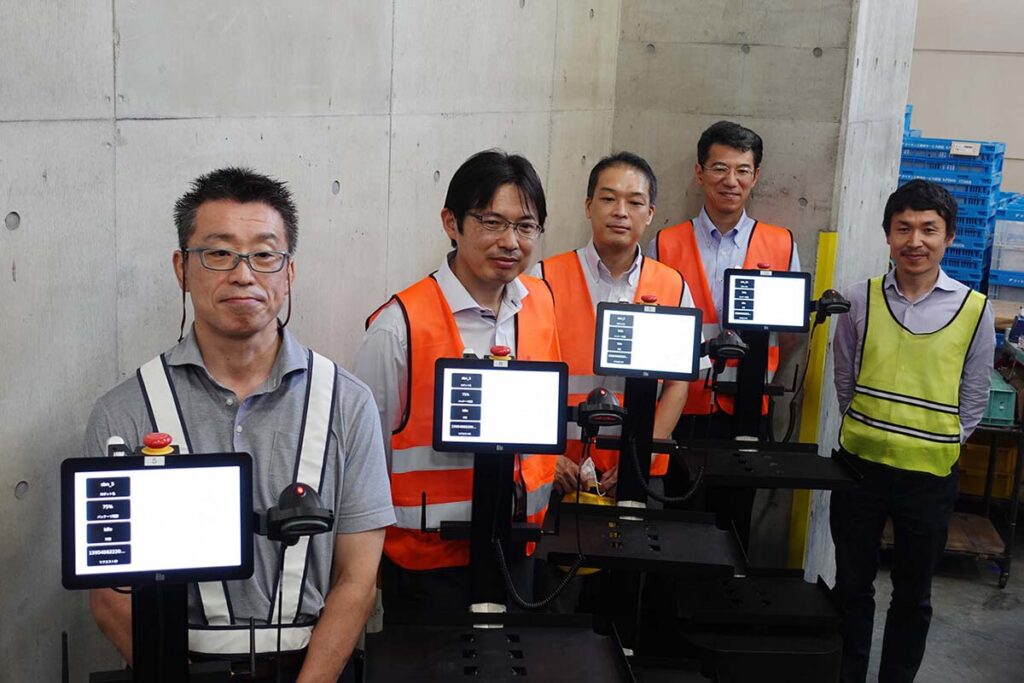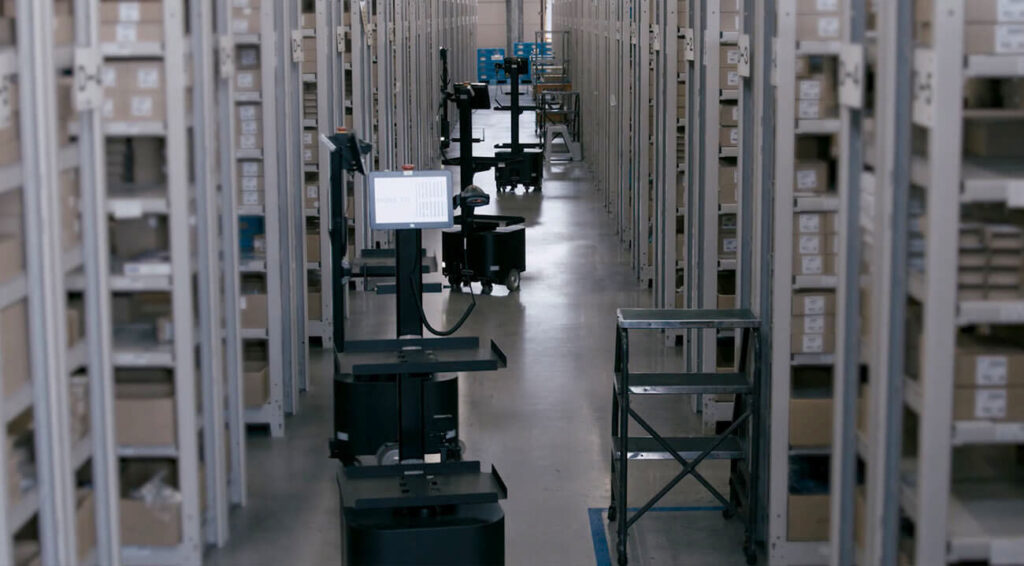Collaborative robots will change the logistics industry!
The reality of introducing logistics robots in the field of Nippon Express

Nippon Express Co., Ltd.
[Industry]
Transportation, Logistics
In 2017, Nippon Express annual revenues exceeded US$16 billion, making it one of the top five global logistics services providers. Nippon Express has a strong global network that spans over 40 countries, with company direct operations in 33 nations.
[Business Details]
Nippon Express is a leader in the logistics industry, providing global logistics services through its worldwide network with approximately 3,500 bases in Japan and 744 overseas bases (321 cities). They are involved in all kinds of logistics, from the transportation of products produced by domestic and overseas companies, to the transportation of large items such as bullet trains and large telescopes, to the special transportation of cultural heritage. Using its knowledge and experience, they are also involved in the consulting and design of logistics centers, as well as the contracting of logistics bases for manufacturers and retailers.
With the expansion of omni-channel retail development of online shopping and other services, the demand for logistics services is rapidly increasing and the workload is growing. In order to solve this problem, “logistics robots,” which work together with humans to improve operational efficiency, are attracting attention. This time, we interviewed a member of the relevant department at Nippon Express Co. We will introduce the company’s vision for the logistics industry and practical examples of the introduction of logistics robots.
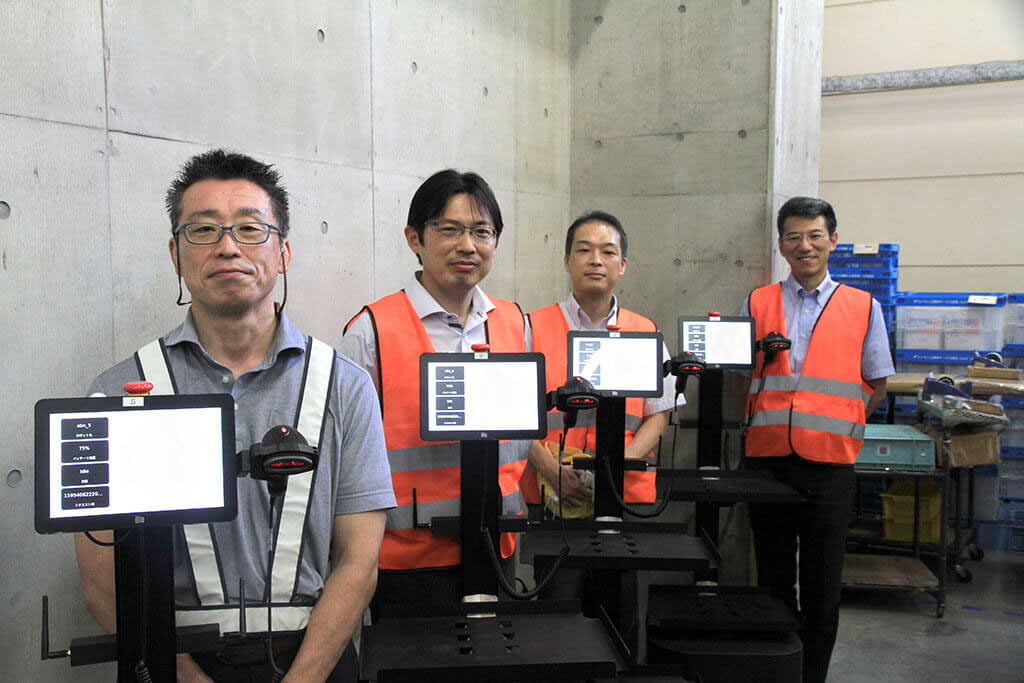
Introduction of logistics robots and their response in the field
Nippon Express, one of the largest companies in the Japanese logistics industry, handles all kinds of logistics, from B2C to BtoB. One of the company’s specialties is “3PL,” or full-service logistics contracting for corporate clients. There are many cases in which Nippon Express is linked to the distribution bases of manufacturers and distributors, and handles transportation, delivery, and storage in an integrated manner.
The site where the logistics robots were introduced is a distribution center that stores and delivers maintenance parts for an air-conditioning equipment manufacturer.
“The number of items is about 23,000, but the number of items we actually store is probably ten times that number. During the off-season, we make 1,500 deliveries per day, but in the summer, when the sales season is in full swing, the number of deliveries more than triples to about 5,000 per day, which sometimes requires longer operating hours for the frontline staff. (Mr. Okamoto)
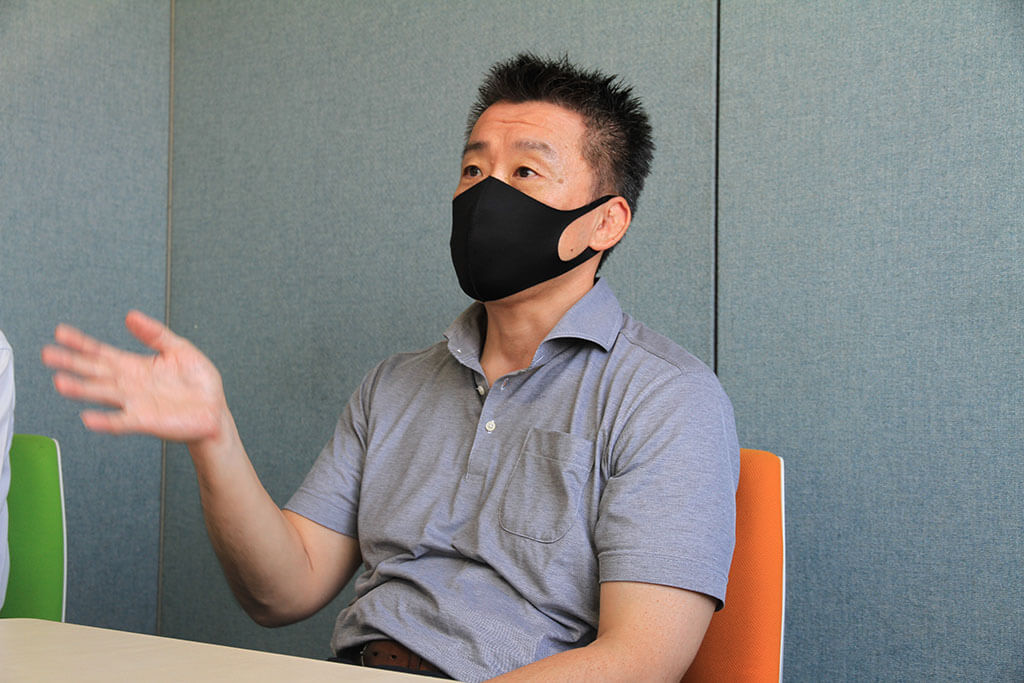
Against this backdrop, the team took about a year and a half to consider and prepare for the introduction of the system. Specifically, what kind of logistics robots were introduced?
“The type of robot we introduced was the AMR (Autonomous Mobile Robot) made by Rapyuta Robotics (RR). The main role of the robots is to pick up the items that have been picked by seven to eight staff members, carry them to the designated location, and designate the next picking location” (Mr. Shindo)
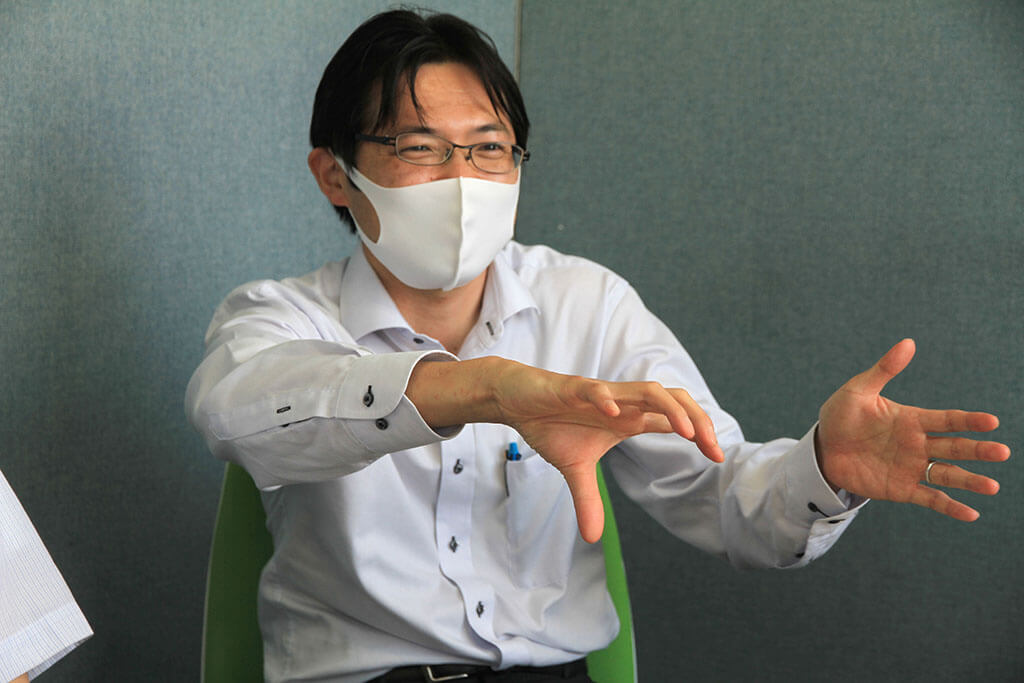
In fact, when we conducted the interview, it had been about half a month since the actual introduction of AMR. We thought that it was still too early to make an evaluation, but we have already started to feel the effects of the AMR introduction in the field.
“The area where the robots are operating is an area where small maintenance parts are stored, and the work environment is such that eight people are doing the picking work. 3 people are assigned to each 5-7 AMRs. Since the actual picking is done by people, the role of the AMR is to carry the picked items to the next picking or packing area, but we realized that the loss was quite large when people were walking here. Rapyuta would be angry with me if I said that we just carry the products, but it was an eye-opener for me to see how we could make the work site easier from this aspect”. (Mr. Okamoto)

“In the past, picking was done by pushing a cart back and forth in the warehouse while holding a picking list and a handheld terminal. On the other hand, when picking with the AMR, you just go to the place where the AMR is stopped, pick what the screen tells you to pick, and put it in the cart without carrying anything. It looks like I’m just walking around aimlessly, and I feel guilty (all laugh). But up until then, I had to pay attention to many things at the same time as I was working, such as making sure I didn’t hit the cart against the shelf or drop the handheld. It’s great that we can free ourselves from that mental stress and focus on speeding up our work”. (Mr. Itoga)
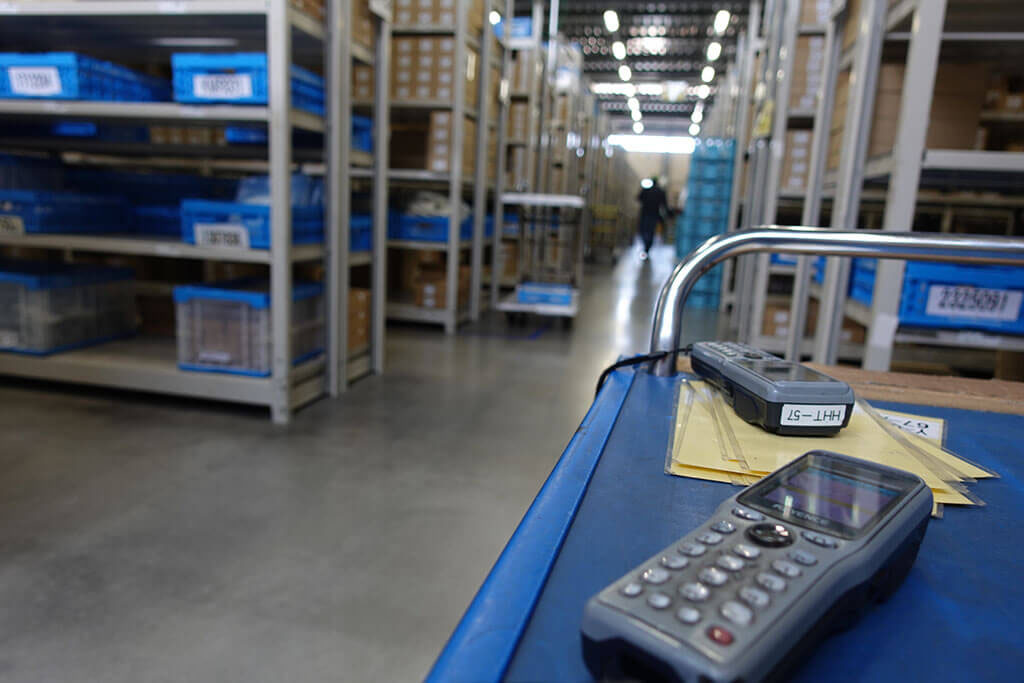
For example, when the autonomous RR AMR passes a person in the warehouse, it uses a sensor to detect and stop its movement to give way to the person.
“Due to the effects of the COVID-19 and other factors, the introduction of the system was delayed to the sales season, and I thought there would be some confusion on the shop floor, but in terms of accumulating actual results with a small number of units, we have been able to conduct a useful verification. We have received some positive suggestions for operational improvements from the field”. (Mr. Shindo)
Can’t get enough people! What is the background that Nippon Express selected for the logistics robots?
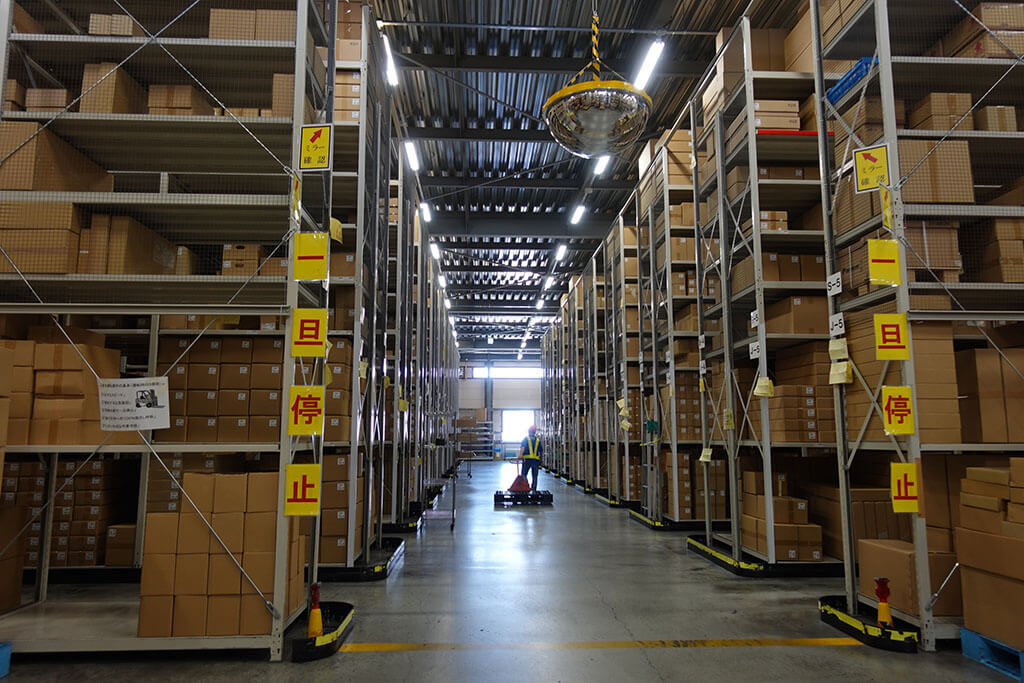
Mr. Itamochi, the general manager who led the implementation team, says that Nippon Express actually decided to implement AMR because of the severe environment surrounding the logistics industry and the client’s needs.
“The main reason for this was the “future issues” facing Nippon Express. It is becoming increasingly difficult to secure personnel, and logistics costs themselves must be lowered in order to achieve customer satisfaction. In order to do so, we need to increase productivity on the shop floor. In addition, since a few years ago, we have seen a rapid increase in the number of requests from customers for automation, labor saving, and manpower saving. Against this backdrop, it was necessary for our department to take an active lead in improving operations and introducing and proposing new technologies. We do this in cooperation with the R&D team in our department.” (Mr.Itamochi)
However, Mr. Itamochi recalls that three to four years ago, there were many uncertainties in the field of “logistics robots,” as there were many unknowns in terms of functionality, cost, and practicality.
“However, you can’t know whether the world is good or bad unless someone tries it first and actually uses it. That’s when RR proposed, ‘Why don’t you do a demonstration experiment with us?” So we decided to give it a try. The customer fully understood and cooperated with us in the form of a demonstration experiment. “It is an eternal challenge for the logistics industry to flexibly manage the workforce according to the workload, but even in this warehouse, it has become difficult to gather people during peak periods. However, even in this warehouse, it is becoming increasingly difficult to recruit people during peak periods. It is clear that operations that rely on manpower and manpower gathering will eventually reach their limits. On the other hand, installing a large scale material handling system and automating it would require a large investment. We were looking for a solution somewhere in between, so we feel we have taken a step toward solving this problem”. (Mr. Itamochi)

The scale of the warehouse and the number of items are key! Criteria for selecting a logistics robot
There are AMRs from several manufacturers, but what was the deciding factor for Nippon Express to choose RR’s AMR?
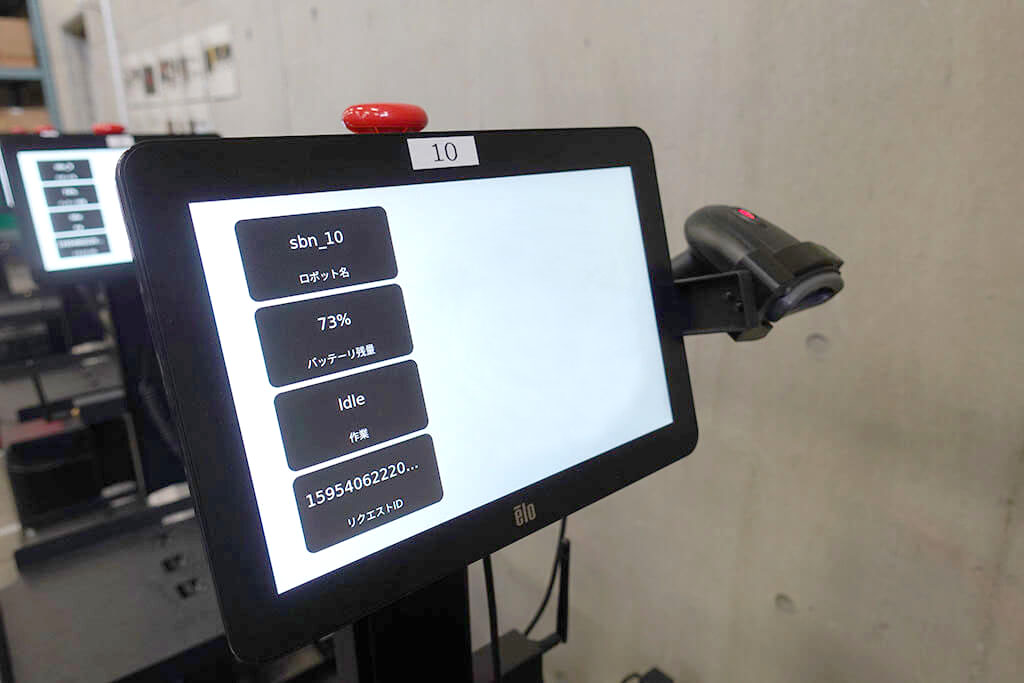
”During the discussion, I was really impressed by the smartness and flexibility of the robots, characterized by “cooperative control” and “swarm control” (controlling multiple robots), and felt their high potential. I also sympathized with the vision of the “rapyuta.io” platform, which allows for the collective management of different types of industrial robots, such as AMRs, automated forklifts, and robot arms, in the cloud. Based on these factors, the rest was just …… intuition (all laugh). RR is a young company, but it gave me a sense of potential to create something good together. The explanations were easy to understand and I had no worries at all.” (Mr. Itamochi)
Another key factor in the choice of AMR was the specifications of the robot according to the scale of the warehouse and the number of items.
“For example, the roles, functions, and number of robots required for a large-scale mail-order center with a large volume of products and a warehouse that receives an enormous amount of orders per day, and a warehouse that is a 3PL and handles logistics for corporations, are completely different. The AMR was a good match for us in an environment where we have 7 to 8 staff members, a moderately large number of products (30,000 items), and a medium-sized warehouse.” (Mr. Itoga)
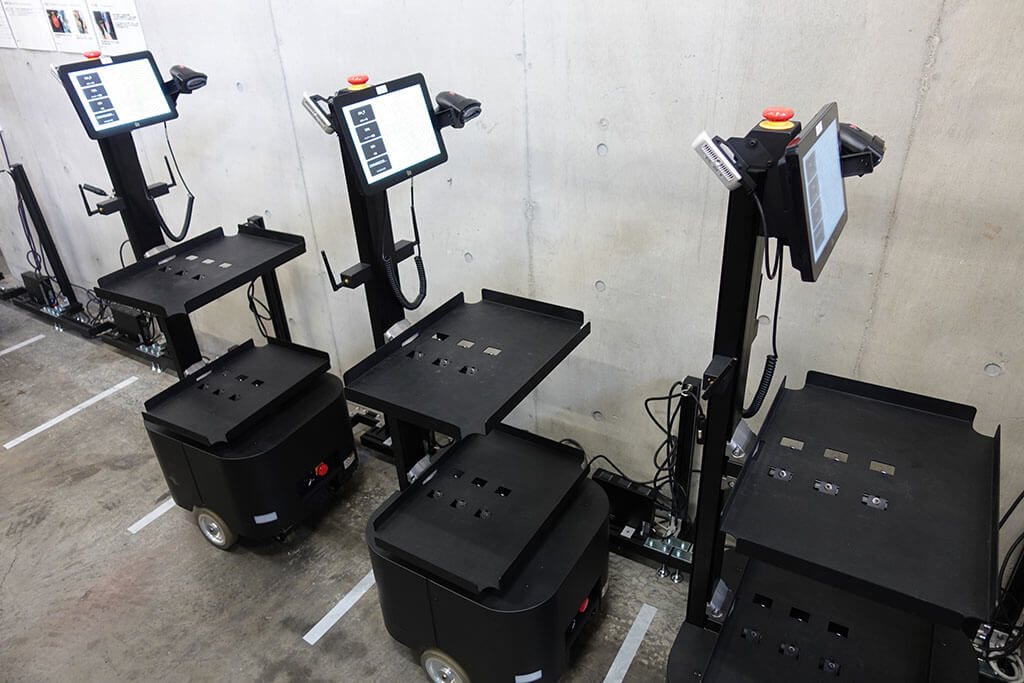
After the study was completed, RR and Nippon Express worked together to adjust the system to make it easier to use in the field.
“When we first tested the system, the strongest comment from the field was, ‘I can’t see where the robot is.’
Even though they could see the robot in the experiment, when they put it into the actual workplace, they could not see it because of the large product inventory, or they could not tell where the robot was when it went between shelves.
So, we asked them to add a new function. After picking is completed and the items are placed on the AMR, the AMR screen will tell the robot, “Please go to this location next. When the picker goes to the location, the AMRs are linked to each other and another AMR is waiting for him there. This way, the pickers can work without hesitation and don’t have to look for the AMR. This system is starting to work and I think it is very effective. I’ve probably never seen any other AMR that has done this well.” (Mr. Shindo)
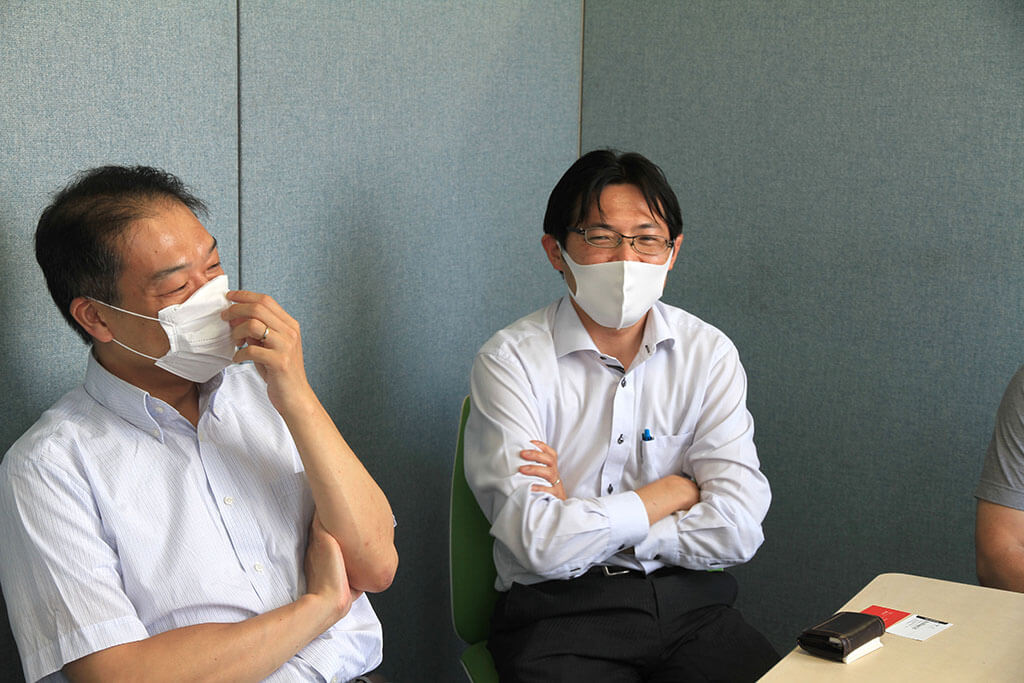
New specifications have been incorporated based on the feedback we received from running the robot in the field.
“In the beginning, the picker was set to pick from the left side of the robot, so when picking items from the other side, the robot would rotate 180 degrees. I felt that this was a time-consuming and wasteful movement because the robot would inevitably turn slowly to avoid dropping the products. It was much faster for the picker to move without moving the AMR, so we made it possible for the picker to pick from either the left or right side of the robot.
In addition, the robot can recognize obstacles in the warehouse and move to avoid them, but we have had the speed and weight upgraded several times to make the movement between shelves even smoother.” (Mr. Okamoto)
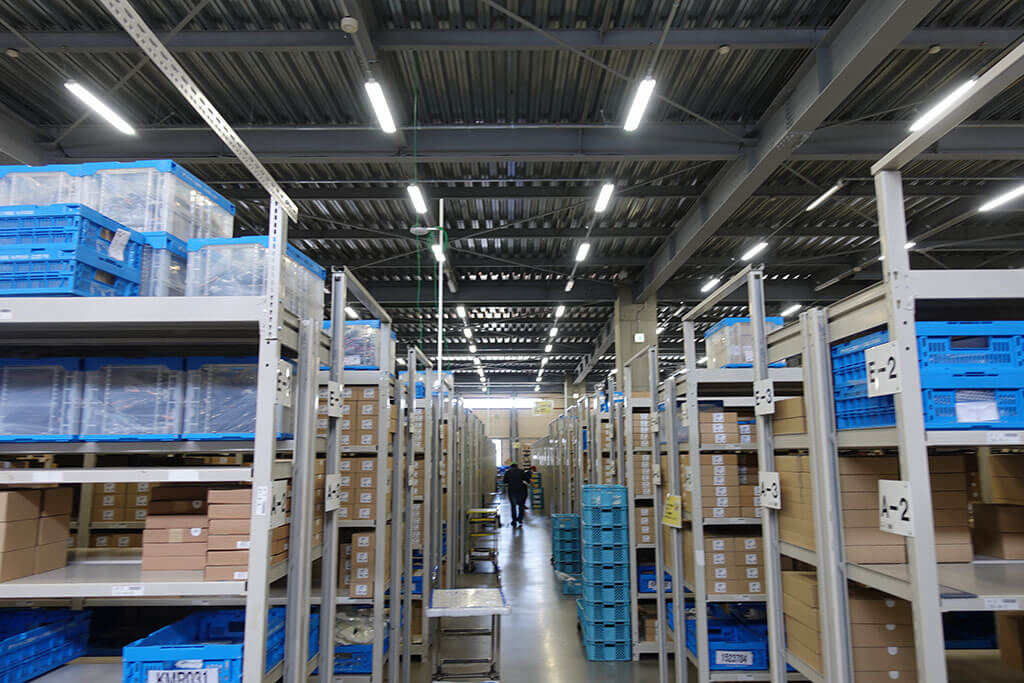
In many warehouses, the verification of cost-effectiveness is a factor that greatly influences investment decisions, especially on the part of management. This issue was also discussed at the time of the introduction of the system at Nippon Express.
“It is true that the high level of uncertainty in terms of effectiveness and figures was a bottleneck in the decision-making process. I think it is important to show the cost-effectiveness of the investment, but since there were no examples in the past and the effectiveness was completely unknown, it was difficult for the company to make a decision. In particular, the logistics business, which is known as 3PL, has to make a profit from the compensation received from corporate customers, so profitability is very important. That is why it is difficult to make investments that are highly uncertain. We are concerned that if the investment in robots is costly and the operation does not go well, it will not only affect our future activities, but may also distract us from our actual business.” (Mr. Itamochi)
However, they believe that this concern will be dispelled by verifying and simulating various data and environments during the initial discussions. We also heard some comments that only those who have implemented the system can give.
“The most important thing is to have a positive attitude toward the project. We need to improve the workplace and meet the expectations of customers. In order to maximize the potential of AMR through repeated trial and error, it is difficult to lead it to success without a solid on-site operation system and environment.” (Mr. Itoga)
There is no theory on how to clarify the division of roles between humans and robots and integrate them in the overall workflow, but it seems that the quickest way is to make adjustments while running in the field.
What are the challenges of introducing logistics robots and what is Nippon Express’s vision?
Nippon Express has many warehouse sites all over Japan and the world. All of them are facing the same problem of securing workforce and human resources. Now that you have started the demonstration experiment of introducing logistics robots, how do you plan to expand the know-how and infrastructure in the future?
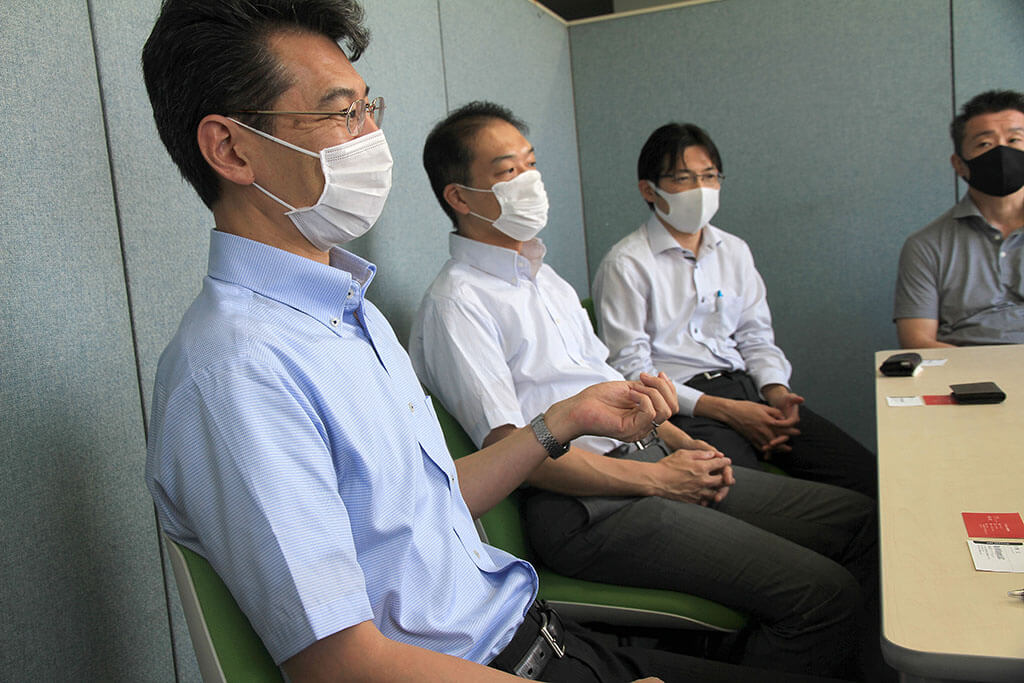
“We have divided our domestic operations into seven blocks (areas). Last year, we assigned a person in charge of promoting the upgrading of warehouse operations to each block, and started activities to promote the upgrading of operations with an eye to introducing material handling systems and robots. Progress reports and information sharing are conducted on a regular basis every month, and AMR case studies are also reported in these reports, which the promotion members listen to with interest. Currently, we are in the phase where we have completed the identification of on-site improvements and are analyzing these operations. After that, we will finally move to the phase of verifying whether the introduction of robots is appropriate or not, and we will actively intervene at sites that are suitable for the introduction of AMR.” (Mr. Itamochi)
In this sense, Mr. Itamochi says, we need to educate the entire company and create a positive atmosphere where people can say, “Our work is going to change in such a positive direction with the introduction of collaborative robots! In this sense, hei says that it is necessary to educate the entire company and create a positive atmosphere where people feel that their work is going to change in such a positive way with the introduction of collaborative robots.
“However, in order to say this, we need to show numerically how much we have mastered the system. I believe that the accumulation of ingenuity, ingenuity, and trial and error here will not only become our company’s know-how, but also contribute to society through the realization of sustainable logistics and provide new value to our customers. We are conducting a very important demonstration experiment in this warehouse to address inevitable future issues.” (Mr. Itamochi)
The use of logistics robots in the field to reduce the burden on logistics sites and improve operational efficiency may be a way to solve a major social issue in Japan, where the birth rate is declining and the population is aging, and the labor shortage is increasing.
The challenge being taken by the Nippon Express logistics robotics team may be the first step toward solving Japan’s future problems.
